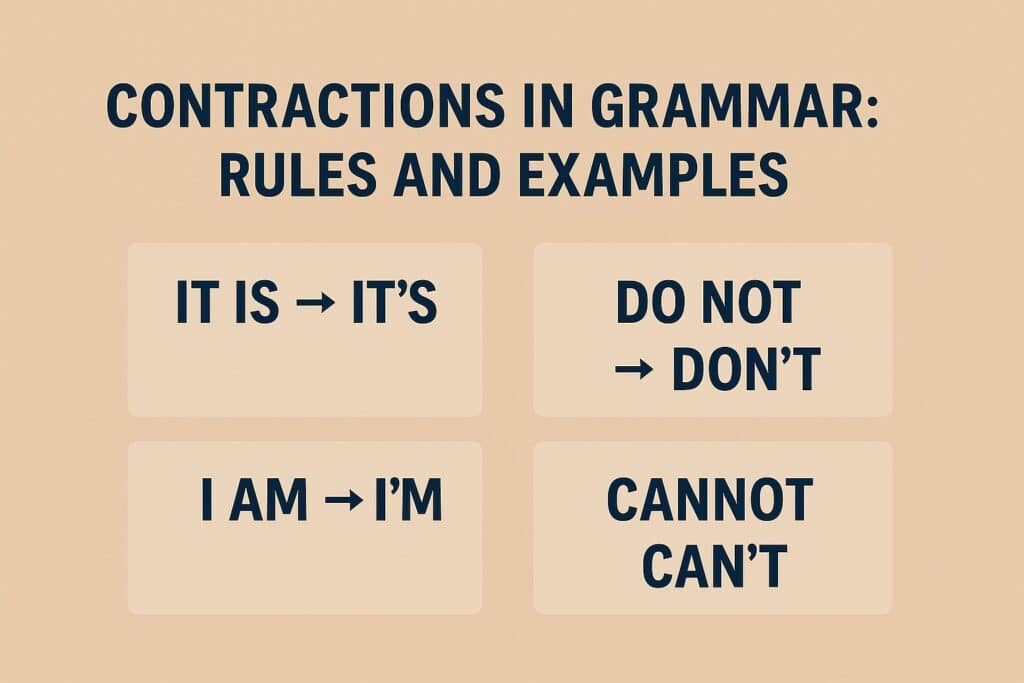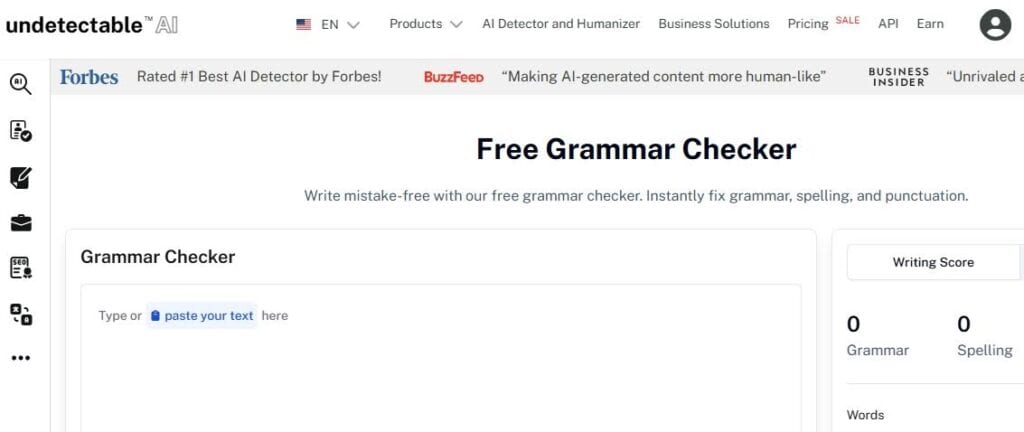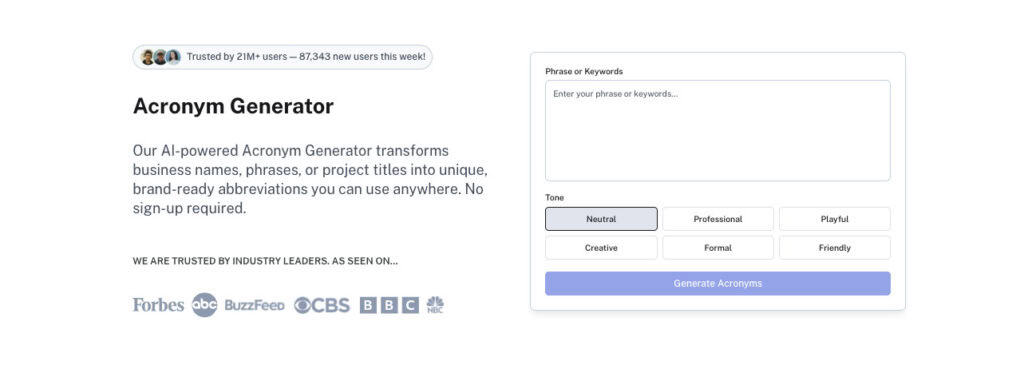English has changed a lot over the centuries.
The old, formal version you’d see in historic speeches or dusty books feels worlds apart from the way we talk and write every day now.
One of the clearest signs of this shift is our love for contractions in grammar.
Contractions are abbreviations that combine words, making speech and writing sound more natural. We use them without even thinking about it.
In fact, watch an American movie and you’ll realize native speakers use contractions in about half of their spoken sentences.
In this article, I’ll describe what grammar contractions are, the different kinds you’ll see, when to use them, and when to skip them so your writing hits just the right tone.
Key Takeaways
- Contractions combine two words into one by replacing missing letters with an apostrophe.
- There are different types of contractions, e.g., pronoun + verb, negative, question word, noun + verb, and informal forms.
- Contractions are very common in casual and marketing writing but are often avoided in academic, legal, or highly formal documents.
What Are Contractions in English?

Contractions are words formed by combining two words into one and replacing the missing letters with an apostrophe. They make your speech sound more natural.
For example, in can’t (can not), the “no” vanishes, and the apostrophe keeps the peace.
You’ll notice the use of contractions in everyday conversation, movies, songs, and sometimes also in your boss’s “urgent” emails.


Never Worry About AI Detecting Your Texts Again. Undetectable AI Can Help You:
- Make your AI assisted writing appear human-like.
- Bypass all major AI detection tools with just one click.
- Use AI safely and confidently in school and work.
They are less common in formal writing, like academic papers or official reports.
In casual contexts, however, avoiding them altogether makes you sound like you time-traveled from a 19th-century courtroom (“I shall not attend the gathering, sir.”)
Common Word Pairs that Form Contractions
Below is a contractions grammar list you will most often notice being used:
- I’m = I am
- You’re = You are
- She’s = She is / She has
- They’ve = They have
- We’ve = We have
- Don’t = Do not
- Can’t = Can not
- Isn’t = Is not
- Won’t = Will not (Fun fact: this one’s irregular, “willn’t” never caught on.)
- What’s = What is / What has
- Who’ll = Who will
- Where’d = Where did
- Let’s = Let us
- That’s = That is / That has
- There’s = There is / There has
- Y’all = You all
- Ain’t = Is not / Are not / Has not / Have not (yes, it’s a little controversial, but it’s been around for centuries)

And if you ever hit a moment where you’re staring at a contraction thinking, Wait, what’s this even short for?, simply go to Undetectable’s Ask AI.
The tool will instantly break down contractions and show you the full forms.
Common Types of Contractions
Contractions serve many different purposes in English.
You can make negatives, questions, or everyday colloquials using different types of them.
Here are some contractions grammar examples of different types:
- Pronoun + Verb Contractions: They take a pronoun (I, you, she, they) and squish it together with a verb like am, is, have, or will.
For example: (I’m, She’s, They’ll, We’ve)
- Negative Contractions: These contractions take a verb and the word ‘not’, from which they kick out the “o” and replace it with an apostrophe, like don’t, isn’t, can’t, shouldn’t.
- Question Word Contractions: They combine a question word with a helper verb (is, will, has) so your question comes out sounding human. For instance, what’s, who’ll, where’s, how’s.
- Noun + Verb Contractions: This combination is not very widely used, but you might still catch it in some everyday conversations. For example, John’s here (John is here), or The cat’s eaten (The cat has eaten).
- Informal and Colloquial Contractions: The final type of contractions is strictly for casual usage, you never use them in academic papers. They include gonna (for going to), wanna (want to), y’all (you all), etc.
Rules for Using Contractions
Now that we’ve met the main types of contractions, let’s now talk about using them well. Here are the golden rules to keep your contractions sharp and mistake-free.
Apostrophe Placement
The job of an apostrophe in contractions is to stand in for missing letters. Place it in the exact spot where the letters were removed, and you’re good.
Get it wrong, and you’re either making up a word or causing unnecessary confusion.
Look at this example:
- Correct: can’t = can + not (apostrophe replaces the “no”)
- Incorrect: cant (this is actually a real word, meaning “insincere talk,” you obviously should not use it for when you say you can not attend the party).
If you find yourself unsure where the apostrophe goes, write out the two full words first, cross out the missing letters, and put the apostrophe in their place.
Formality and Context Awareness
Contractions are best used in casual writing and speech, but in formal contexts, they feel a little out of place.
A text message to your best friend can say: I’m so excited for the weekend!
But, a formal email to a business client would look cleaner as: I am looking forward to the weekend.
There’s no universal ban on contractions in formal writing (even The New York Times uses them), but you must know your audience and purpose.
When aiming for professional or academic credibility, limit your contractions usage.
But when you’re writing a blog, an email, or social media post, contractions keep your tone warm and approachable.
Subject-Verb Agreement in Contractions
Contractions still have to follow basic grammar rules. Just because you’ve squished words together doesn’t mean you can ignore subject–verb agreement.
The verb inside the contraction must still match the subject in number and tense.
For example:
- Correct: She’s going to love this (She + is)
- Incorrect: They’s going to love this. (The correct version would be “They’re going to love it.”)
A quick trick to check for grammar is to mentally expand the contraction before you commit to it.
When the full form doesn’t sound right to you, the contraction won’t either. If “They’s” expands to “They is” and that sounds wrong, you know the contraction is wrong too.

Anytime you’re worried about missing an apostrophe or accidentally letting the wrong contraction slip into a formal piece, let Undetectable’s free AI Grammar Checker save the day.
The grammar checker will spot all your misused contractions and suggest you the right changes.
Contractions vs Possessives
One of the most frequent grammar mix-ups happens when contractions and possessives get mistaken for each other.
A contraction shortens two words into one by replacing missing letters with an apostrophe, while a possessive shows ownership (the dog’s bone means the bone belongs to the dog).
The word “it’s” with an apostrophe is always a contraction, never possessive.
And “it’s” without an apostrophe is the possessive form (as in, the cat licked its paw). Same with your vs. you’re, your shows possession, you’re is a contraction for “you are.”
Always slow down and check what you mean during your writing.
If you can replace the word with the full form (it is, you are, they have) and the sentence still works, you need a contraction.
If replacing it with “belongs to” makes sense, it’s a possessive.
Whenever you’re confused about which one to use, use the Undetectable AI Essay Rewriter to tidy up your writing and clear any ambiguous phrases that make readers wonder if you meant ownership or a shortened form.
Contractions in Formal vs Informal Writing

Earlier, we talked about how the use of contractions is dependent on the context of the sentence.
You wouldn’t talk to your professor the same way you talk to your best friend at 1 a.m.
When to Avoid Contractions in Academic or Legal Texts
Certain documents always require a formal writing tone, for instance:
- Academic essays
- Research papers
- Court filings
- Policy documents
In these contexts, contractions unintentionally chip away at the perceived seriousness of your work.
Look at this example:
- Casual: The results don’t show a clear correlation.
- Formal: The results do not show a clear correlation.
The second example reads more authoritative, which is exactly what you need when your audience expects rigor and professionalism.
Certain contractions could open the door to misinterpretation.
For example, “it’s” (it is) vs. “its” (possessive) is a potential loophole in a contract that may lead to big consequences.
When They’re Acceptable in Marketing or Dialogue
Marketing copy, blog posts, fiction, and everyday conversations use contractions quite a lot. Frankly, contractions make the writing sound like it’s coming from a real human.
Many brands use them to connect with customers on their social media, email campaigns, and conversational ads.
Compare the following:
- We cannot wait to welcome you to our grand opening.
- We can’t wait to welcome you to our grand opening.
Of course, the second one instantly feels warmer and more relatable.
“Betcha Can’t Eat Just One” is a famous, fun, and sassy advertising slogan for Lay’s potato chips that uses contractions. Similarly, “Let’s Go Places” is the current tagline for Toyota.
In fiction especially, avoiding contractions in character speech makes dialogue sound very unnatural, unless it’s part of a deliberate characterization (like a robot, historical figure).

If you want to create a brand voice that is as memorable as a classic slogan, you need to find the right balance between brevity and impact.
Also, you can use Undetectable AI’s Acronym Generator to turn long phrases into catchy contractions or shortened forms for casual and professional communication, making your messaging much easier for your audience to remember.
Tone and Voice Considerations
The decision to use contractions also depends on the tone you aim for in your writing.
If your writing style is warm and conversational, contractions maintain that flow. But, in a formal, authoritative tone, fewer contractions work better.
Mixing casual contractions with stiff, formal sentences will create tonal whiplash.
If a letter starts with “I am pleased to inform you…,” and later says “We can’t wait to get started!,” there’s a sudden tone shift that feels jarring.
Decide early whether your piece is leaning formal, informal, or somewhere in between, and stick with it.

Also, Undetectable AI Humanizer can help you by introducing natural contractions in just the right places. It knows exactly when to swap “cannot” for “can’t” based on the tone of the rest of your piece.
ESL Tips for Learning Contractions
Learning English as a second language (ESL) is not easy.
Native speakers drop contractions into speech and writing all the time, and you’re bound to come across some that you’ll have a hard time understanding.
Here are a few focused tips to help you learn them easily:
- You don’t need to memorize every contraction in the English language right away. Begin with “I’m,” “you’re,” “he’s,” “she’s,” “it’s,” “we’re,” “they’re,” “don’t,” “can’t,” “won’t,” and “I’ll” that’ll cover a huge chunk of everyday conversations.
- Watch English TV shows, YouTube videos, or podcasts, and pay attention to how often people actually use contractions. You’ll notice that “I am going” is rare in casual talk, most people say “I’m going.”
- Try reading sentences with and without contractions to feel how the pace changes. Once you get comfortable with speaking them out loud, you’ll realize how they’re part of the default way people talk.
- And if you want a fun way to speed up your progress, try AI Chat for interactive grammar games and contraction correction drills
Check out our AI Detector and Humanizer right in the widget below!
FAQs About Grammar and Contractions
Are Contractions Acceptable in Business Emails?
Yes, in most cases. They make your message feel approachable and human. “I’ll send the report today” feels warmer than “I will send the report today.”
However, when you have a client, or you work in an industry like law, you should not use them.
Can Contractions Be Used in Resumes?
It is generally not recommended to use contractions in resumes because they are formal documents, so write out the full words.
You can use them in personal statements or interviews, though.
Are Contractions Always Informal?
Not at all. They are perfectly fine in professional settings, provided you want a natural, conversational tone. News articles use them too!
What’s the Difference Between Can’t and Cannot?
Both can’t and cannot express the same idea. “Cannot” sounds stronger and more formal, while “can’t” is a contraction used in a conversational tone.
Final Thoughts
In summary, contractions are shortened forms of words that make writing sound natural. But use them in the wrong place, and your tone slips from professional to too casual in a heartbeat.
Undetectable AI is a great language learning companion that tells you exactly where a contraction fits and where it’s better to keep things formal.
You’ll also get all your contractions grammar mistakes flagged before they embarrass you in front of a client, boss, or that one coworker who lives for pointing them out.
With Undetectable AI’s Ask AI, AI Chat, Grammar Checker, and AI Humanizer, you can instantly check tone, formality, and correctness in your writing.
Give Undetectable AI a spin today!
